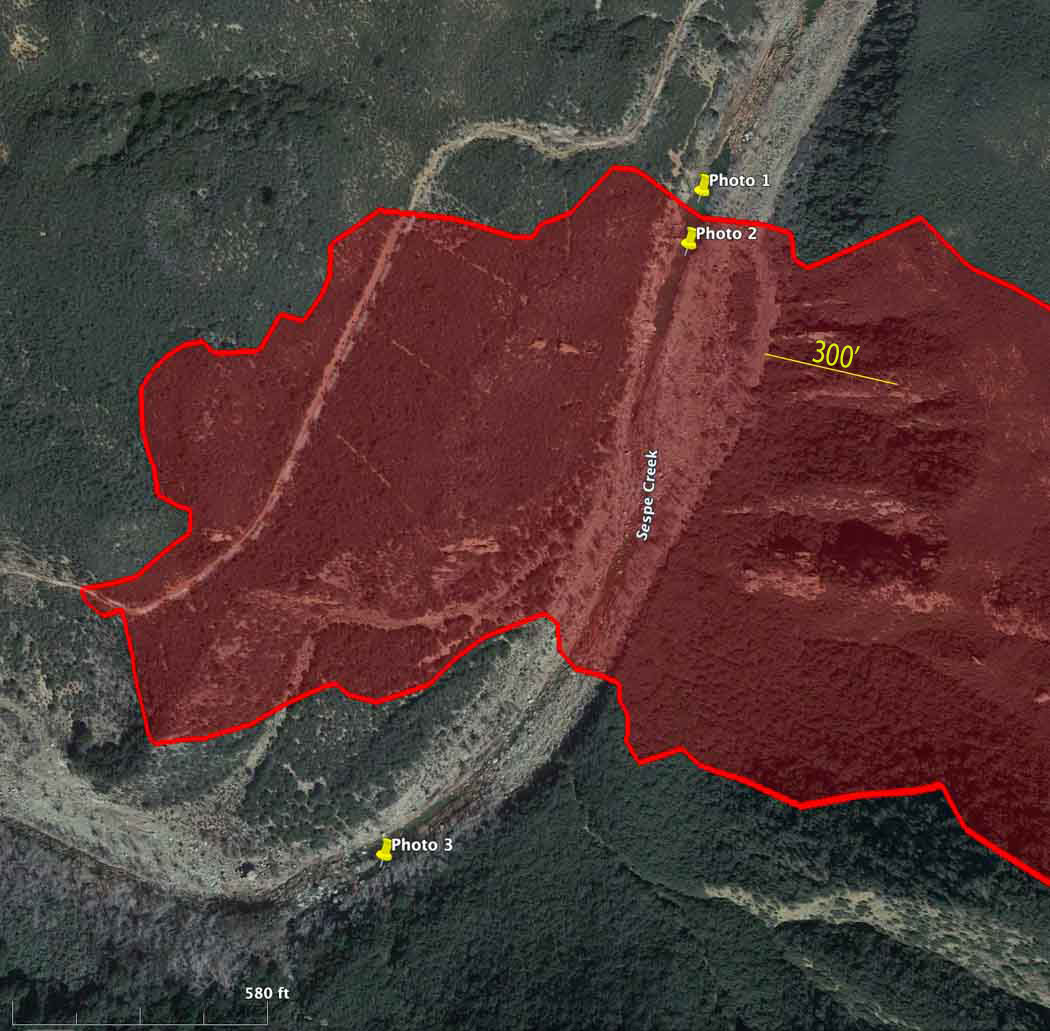
A lawsuit filed Tuesday alleged that the US Forest Service has polluted waterways by firefighting air tankers inadvertently dropping fire retardant in or near waterways in violation of the Clean Water Act and a policy adopted by the Forest Service and other federal agencies in 2011. The policy requires that retardant not be dropped within 300 feet of a waterway on federal land.

Fire Aviation has acquired photos and a video that reportedly show signs of retardant being dropped into Sespe Creek on the Los Padres National Forest 8 miles northeast of Ojai, California October 8, 2022. The photos were shot by Pete Deneen on October 12, 2022 at the 85-acre Howard Fire. The creek is designated a “wild and scenic river” and is in a wilderness area.

The photos show retardant on rocks and other objects very close to water in Sespe Creek.

Some organisms, including aquatic threatened and endangered species or their habitats, can be adversely affected by retardants. In addition, retardant in water is a pollutant.
According to US Forest Service data, between 2012 and 2019, the Forest Service discharged retardant on at least 376 occasions totaling 761,282 gallons from aircraft directly into national forest waterways.
In the video below Mr. Deneen explains that there were two locations where retardant was dropped very close to the creek. In one case the aircraft may have turned as it was dropping to follow the creek for several hundred yards, or a second drop accounted for the retardant in the waterway.
The lawsuit was filed Oct. 11 by the Forest Service Employees for Environmental Ethics, FSEEE. In the group’s complaint they are seeking:
- A declaration that the Forest Service’s placement of retardant in waterways is a violation of the Clean Water Act.
- An injunction “to compel the Forest Service to comply with applicable environmental statutes, prevent irreparable harm, and satisfy the public interest.”
- Reimbursement for FSEEE’s costs, expenses, expert witness fees, and attorney fees.
- “Such further relief as may be just, proper, and equitable.”
More about FSEEE’s history of protesting retardant, and the federal government’s policy of retardant avoidance areas established in 2011.

Direct excerpt from the first paragraph link (policy):
Exceptions:
• When alternative line construction tactics are not available due to terrain constraints, congested area, life and property concerns or lack of ground personnel, it is acceptable to anchor the foam or retardant application to the waterway. When anchoring a retardant or foam line to a waterway, use the most accurate method of delivery in order to minimize placement of retardant or foam in the waterway (e.g., a helicopter rather than a heavy airtanker).
• Deviations from these guidelines are acceptable when life or property is threatened and the use of retardant or foam can be reasonably expected to alleviate the threat.
• When potential damage to natural resources outweighs possible loss of aquatic life, the unit administrator may approve a deviation from these guidelines.
The article fails to mention that there was a direct life threat during the initial attack. Ventura county copters airlifted 7 people to safety. Great stop by all ground and aerial firefighters!
One question not considered is what happens to the local environment if the fire is not stopped? An large intense fire will harm the creek more than the inadvertent drops. An opinion from a local who has fought fires in that area.
Looks like a healthy fishery.
Joy, I’ll second Jim’s motion.
Does anyone know of any scientific studies/open-source links evaluating the post-drop effects of currently-used retardants? Boron is quite toxic, but is that used anymore? In what forms concentrations is phosphorous flammable?
What changes are you for?
Open the discussion….
Anytime someone needs help documenting about slurry drops – I am your gal. I have been doing that for almost 10 years. We lost too many and right after YHF 2013— go peak at the images for the Beaver Creek 2013 Idaho— I am not for lawsuits but I am for change…and it is about time…Amen. CAPLES RX (RiP), etc…the long list goes on…
I didn’t find the first two photos credible, bu the third looks legit. I’m not sure how the pilot was supposed to swerve enough to keep the retardant out of the creek.
No water flowing either in the area great stop
Is the observer a pilot? Might topography have dictated aircraft operation options?
Seems to have stopped the fire at the drop, but according to a previous article, it doesn’t.